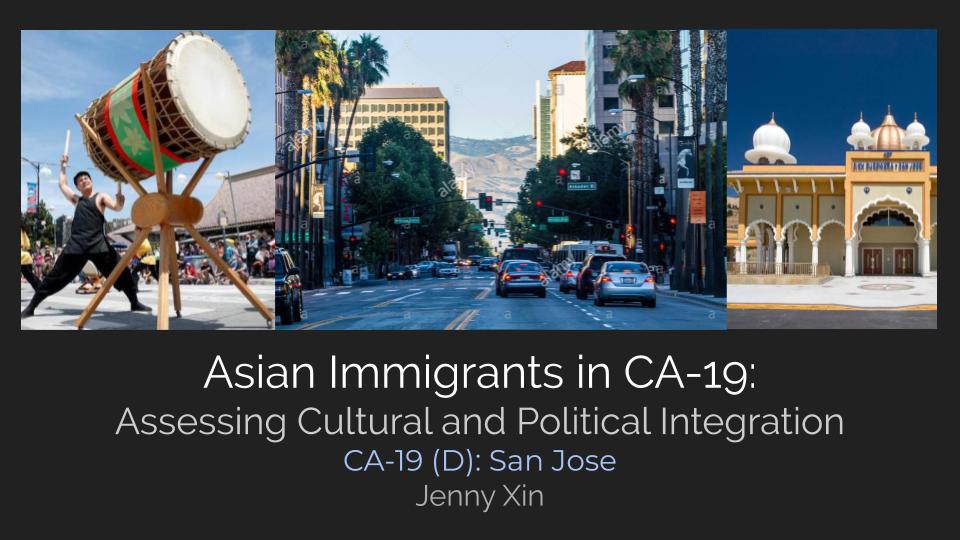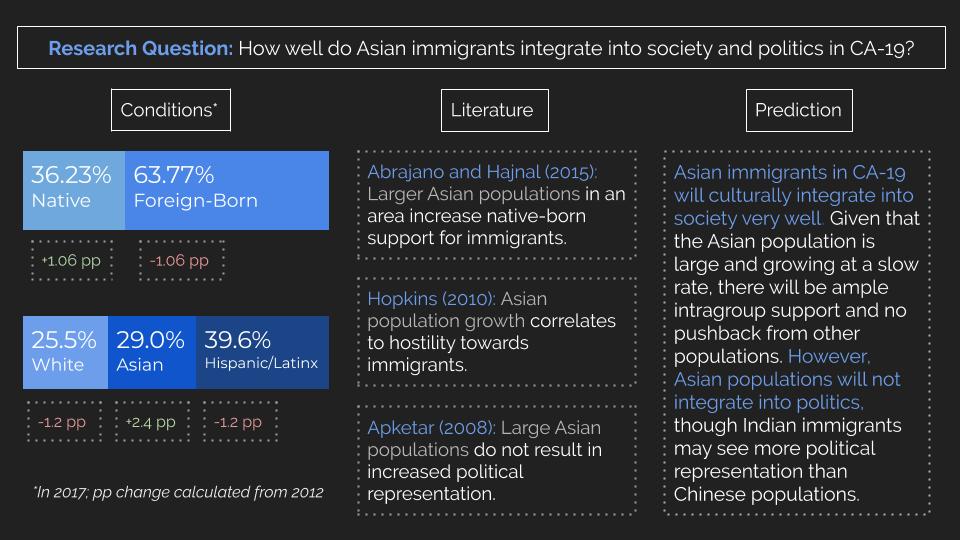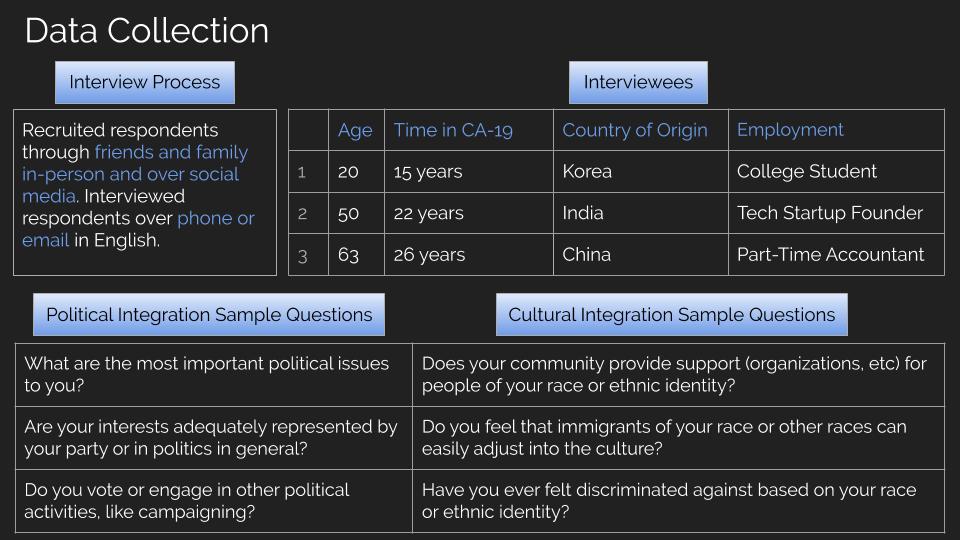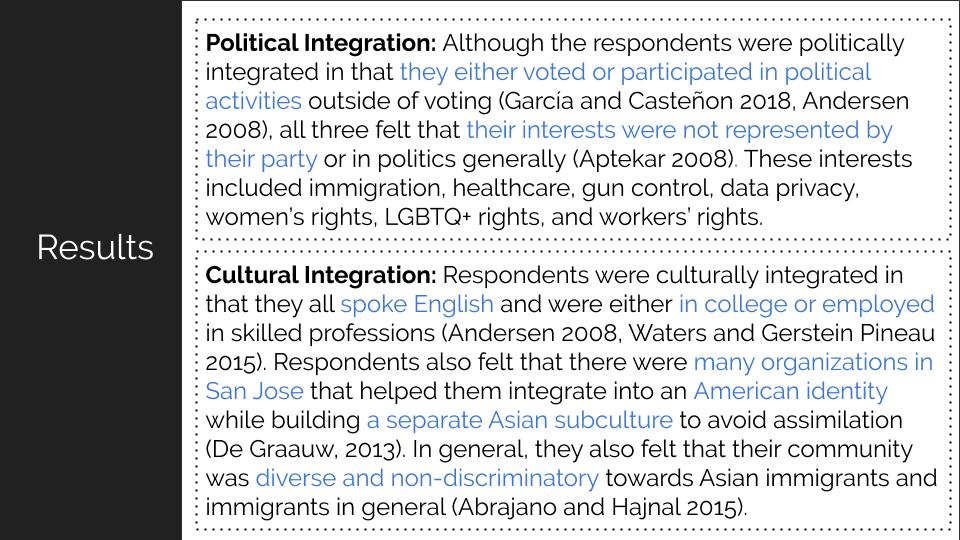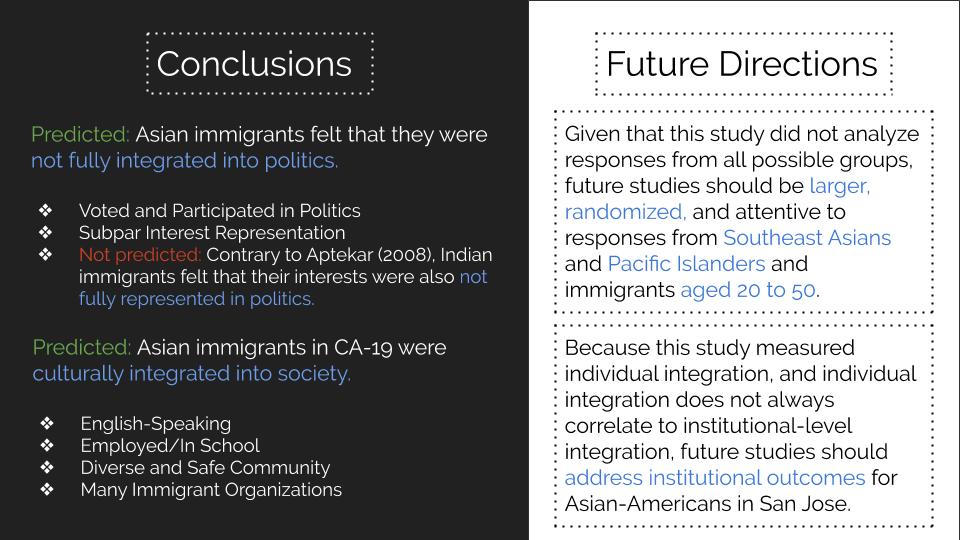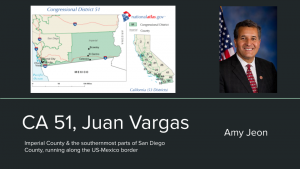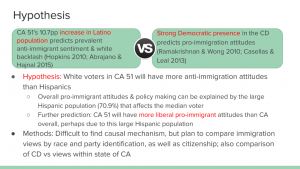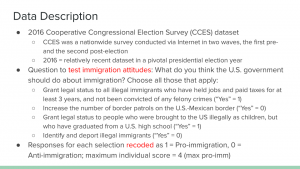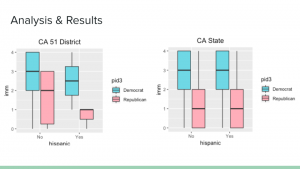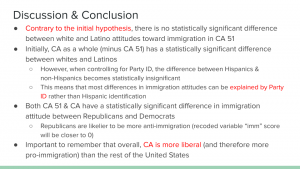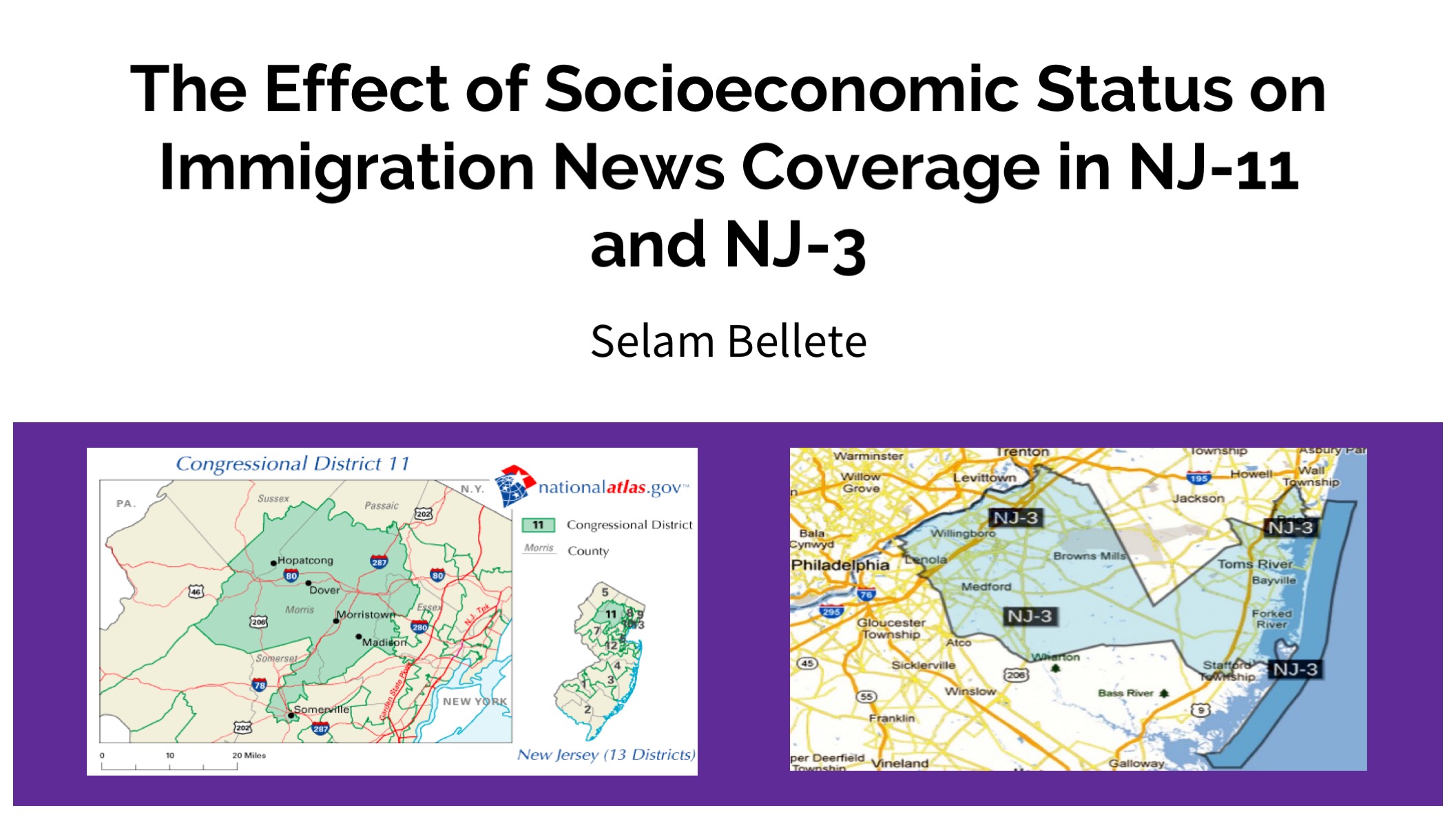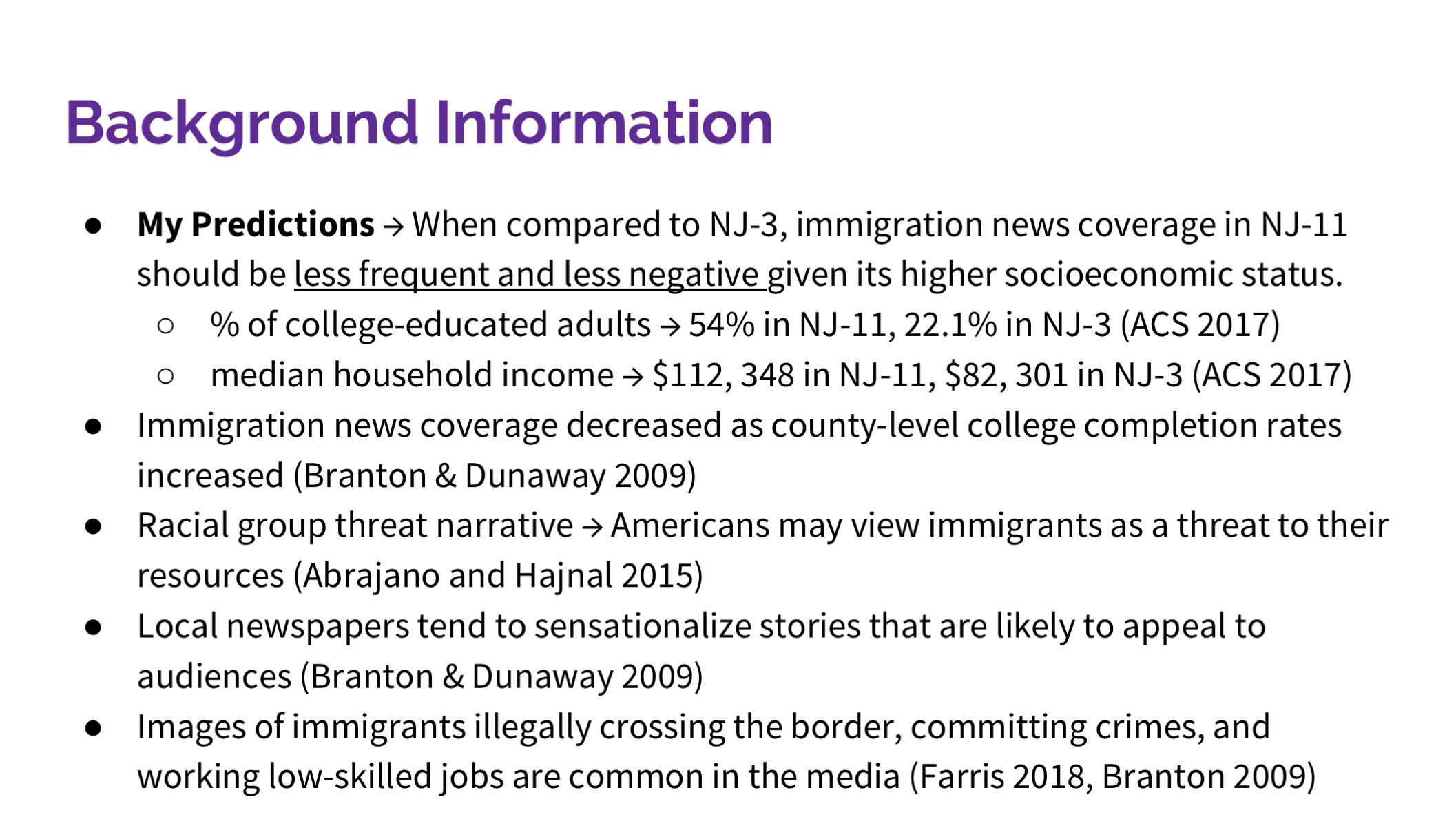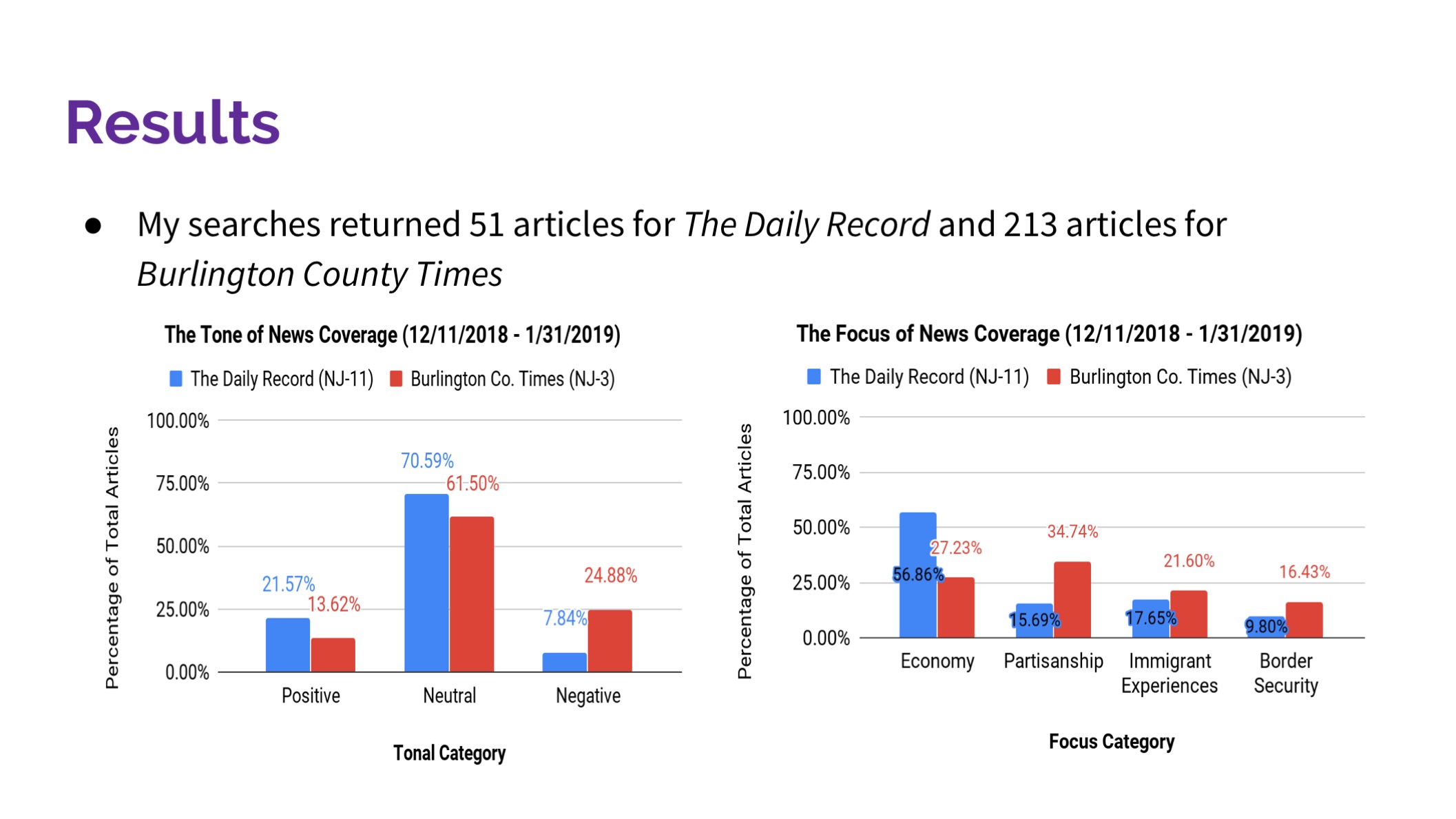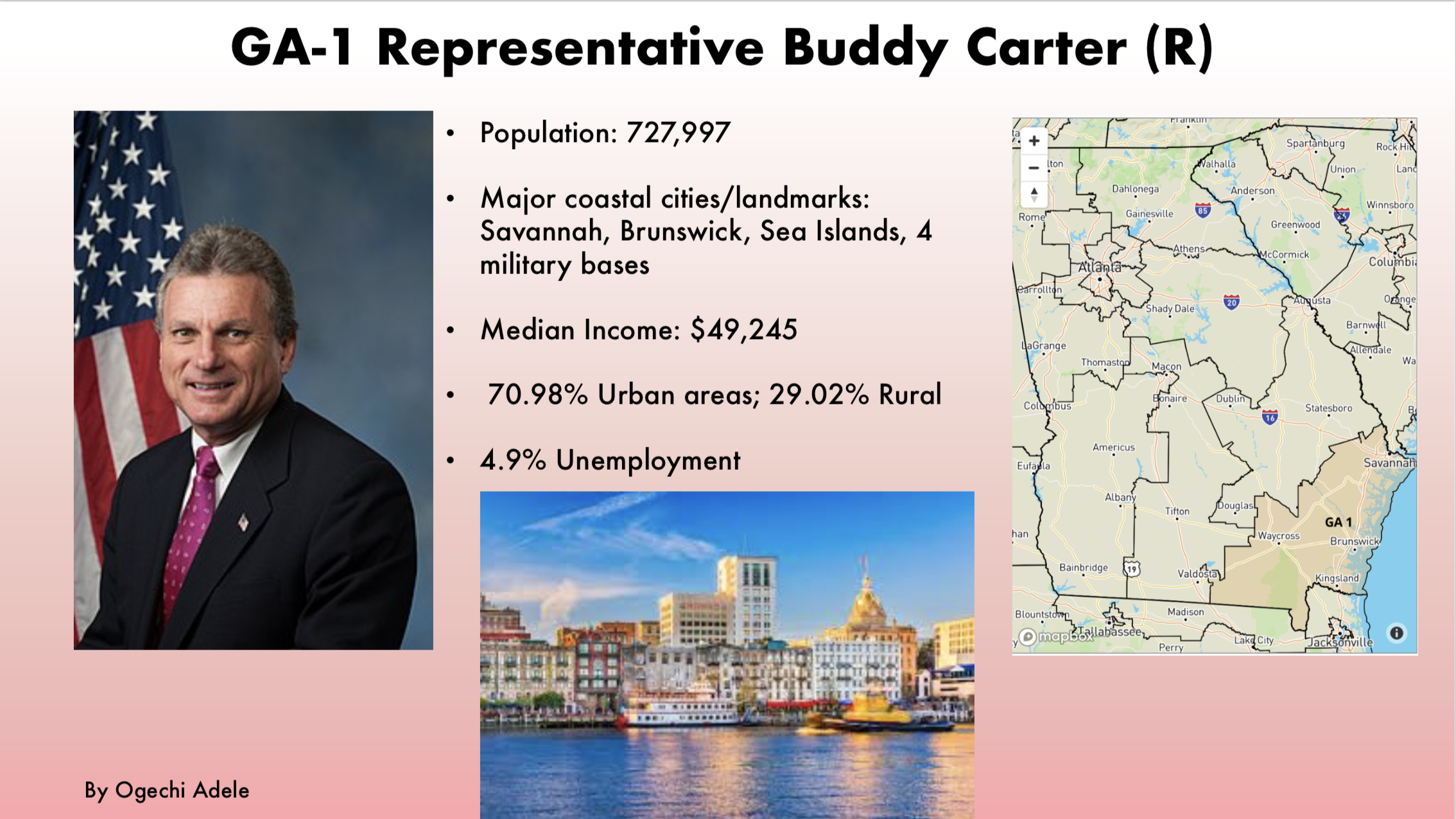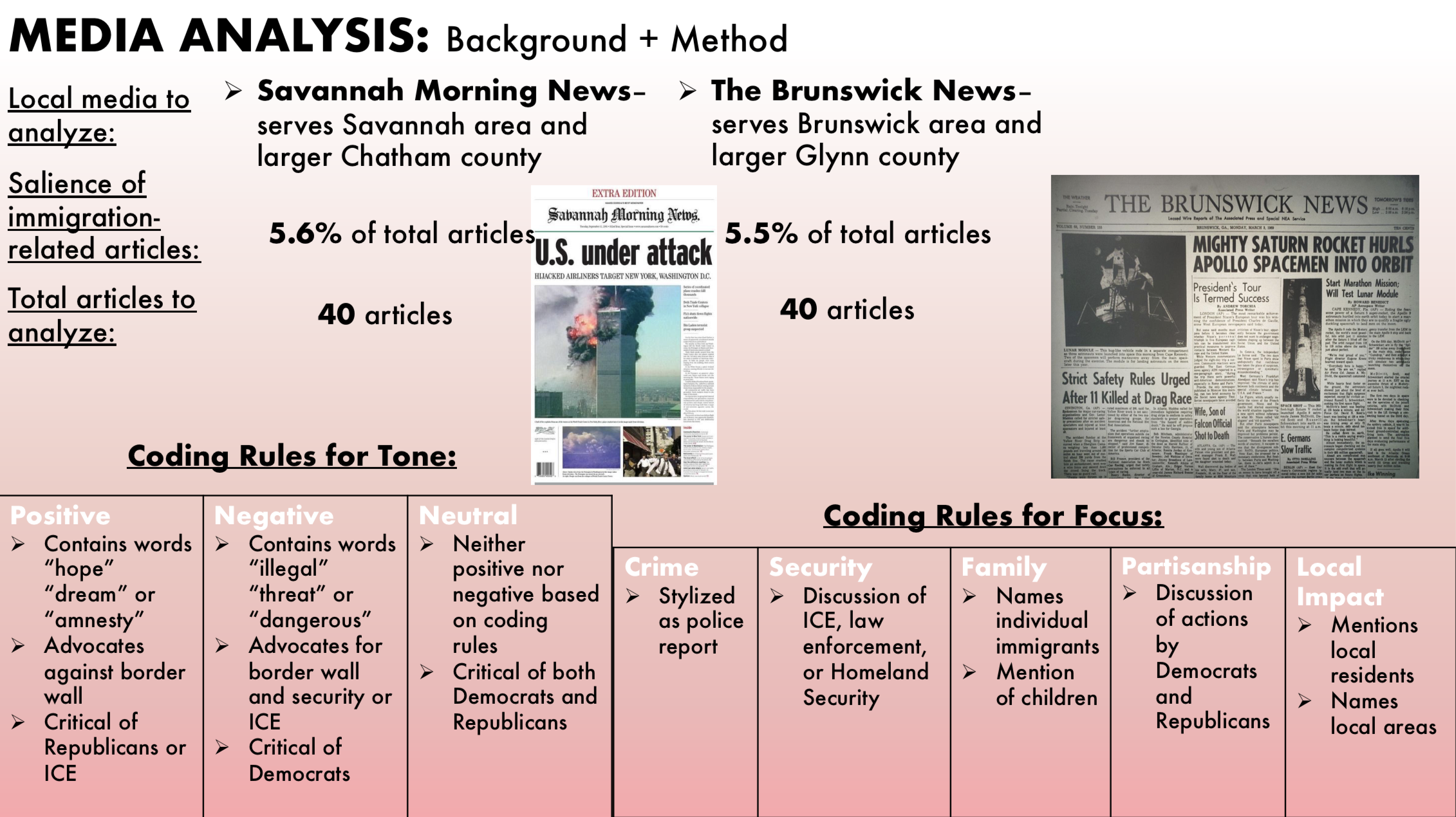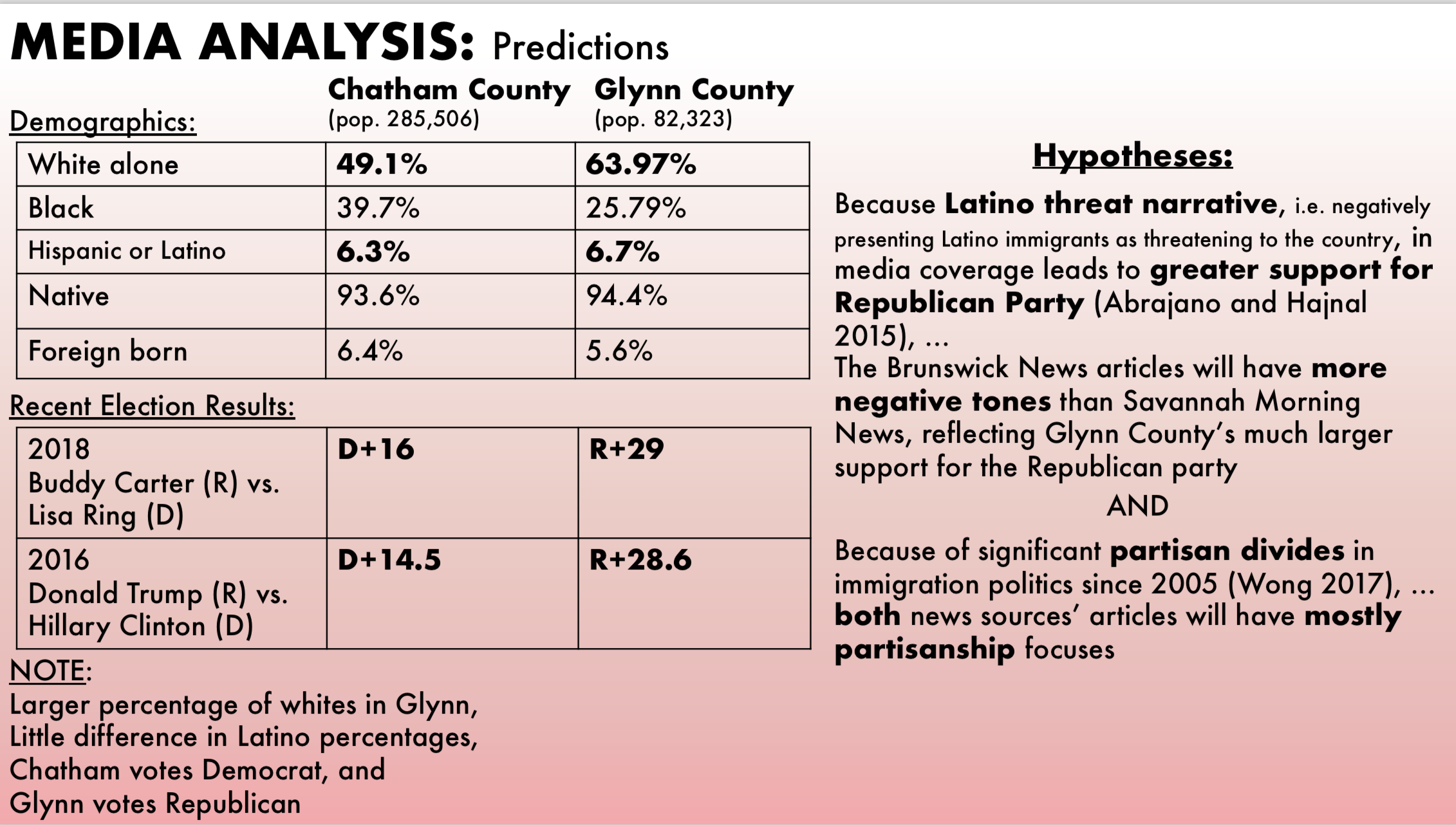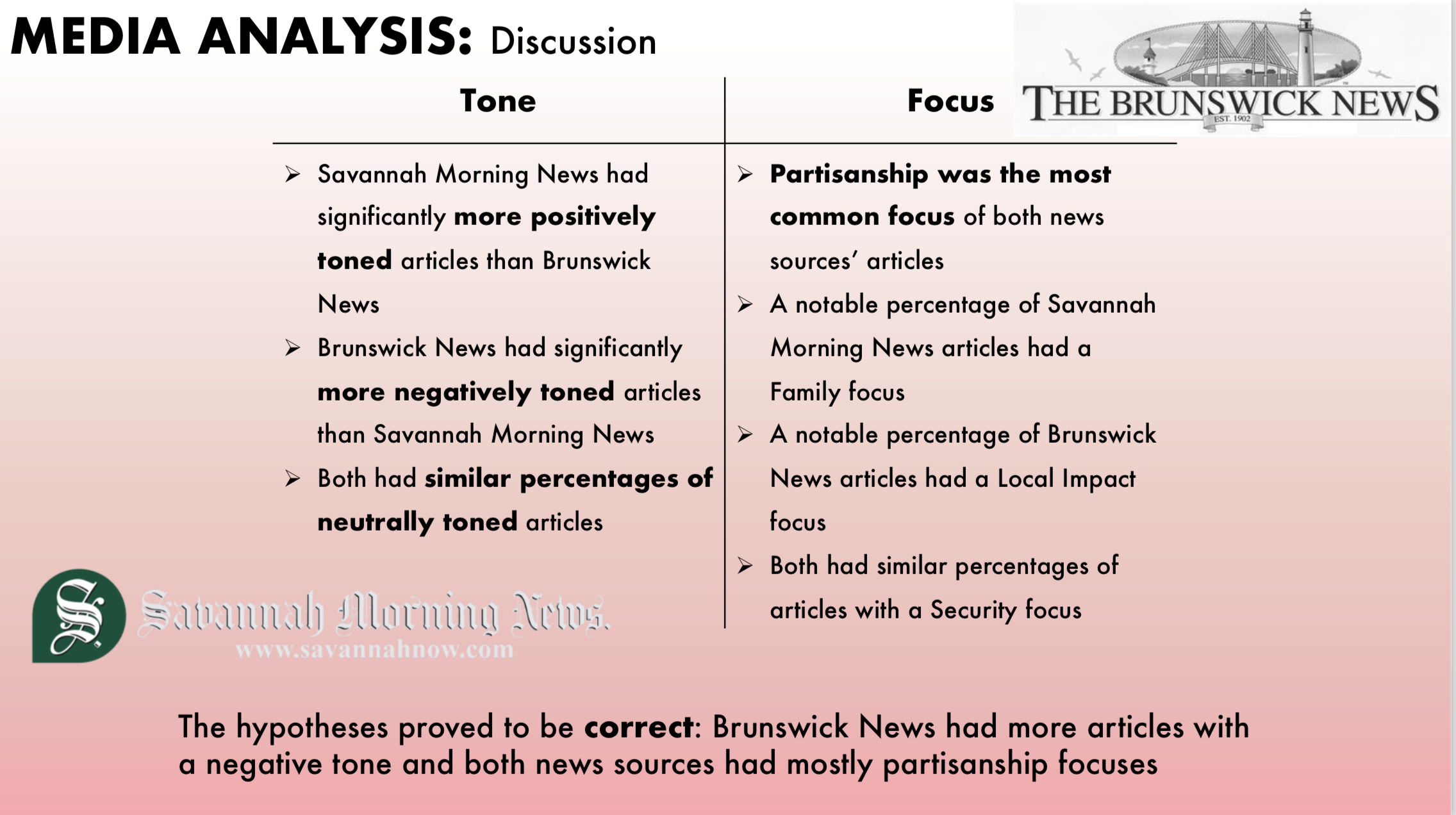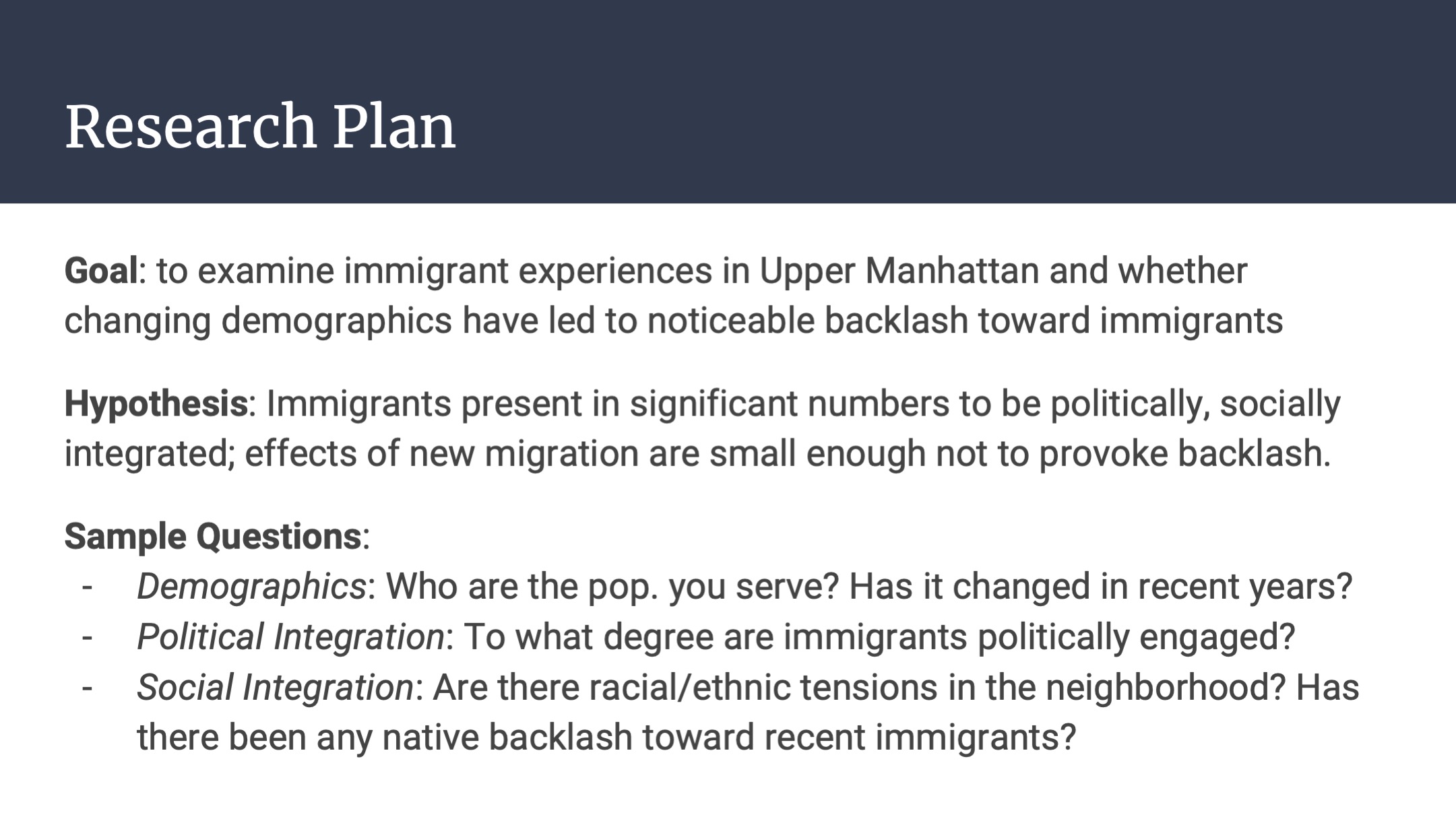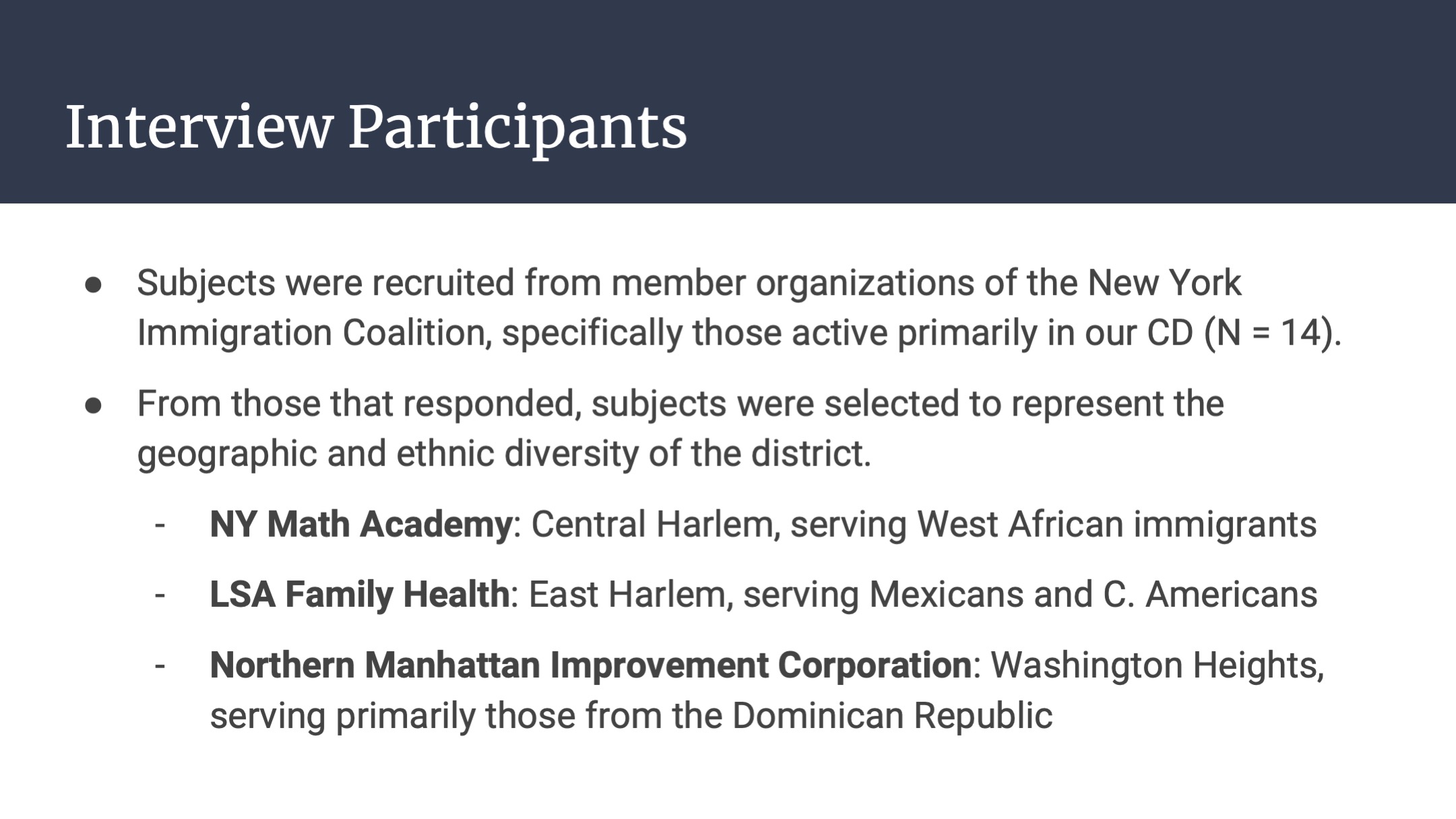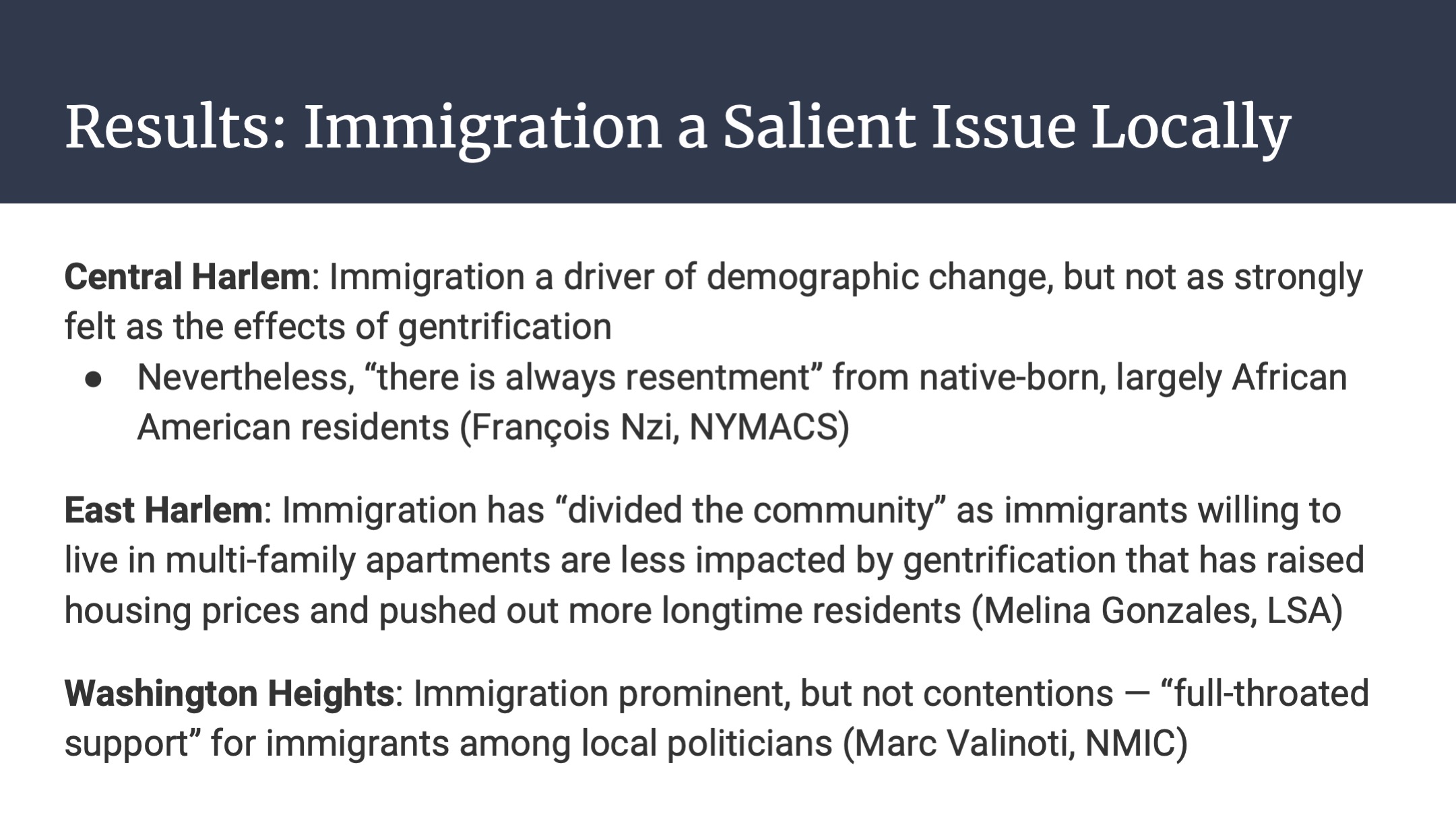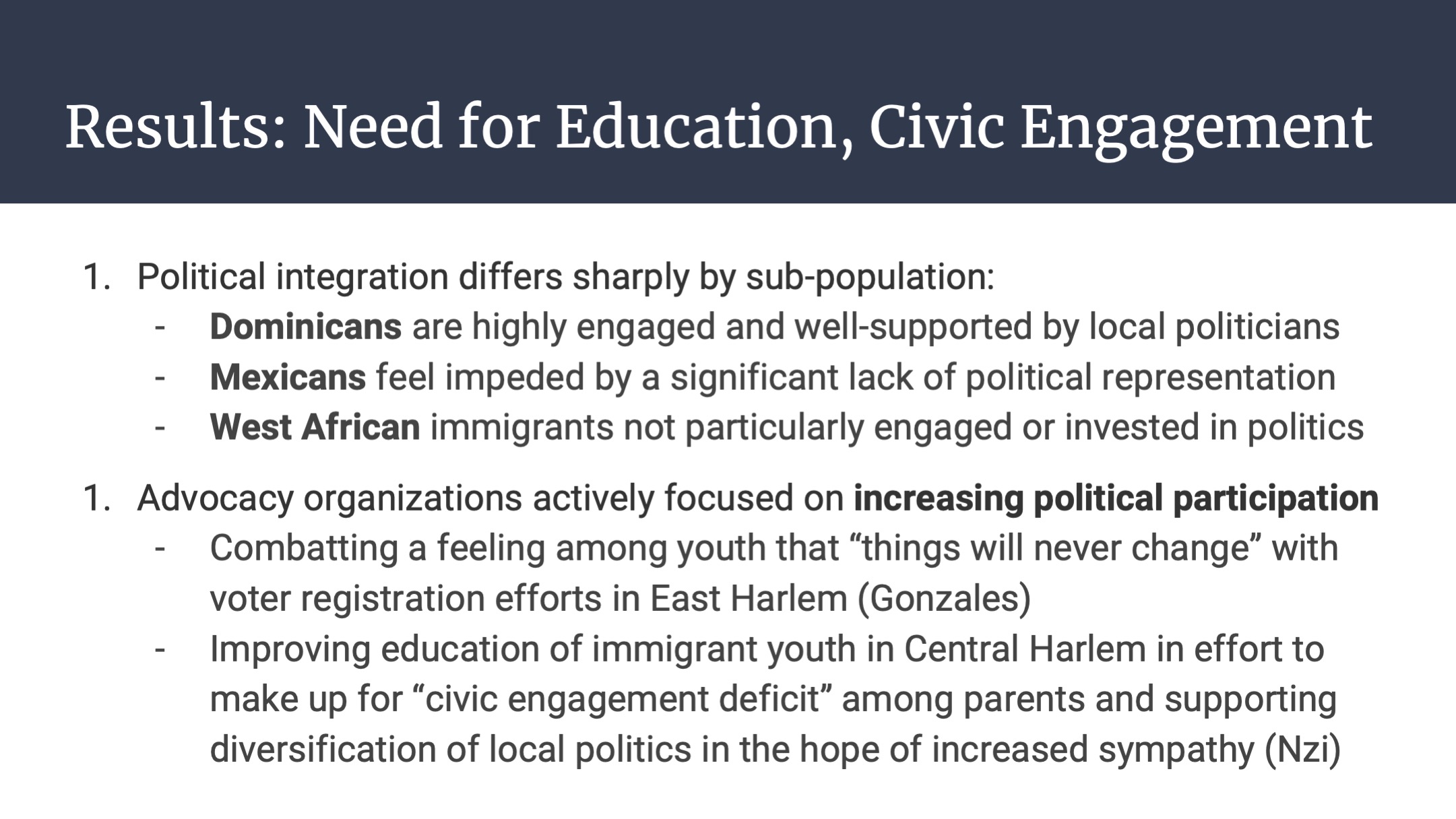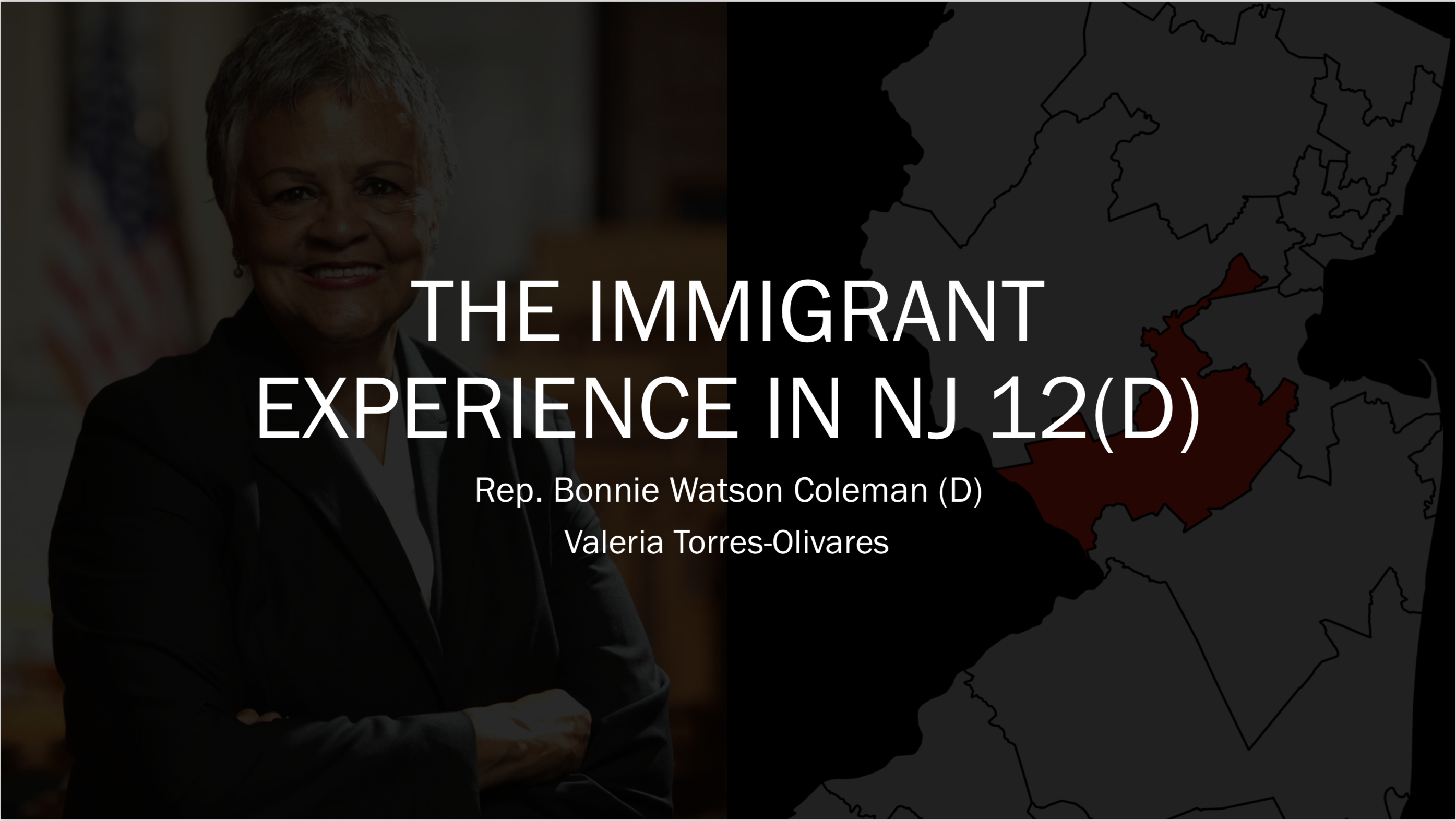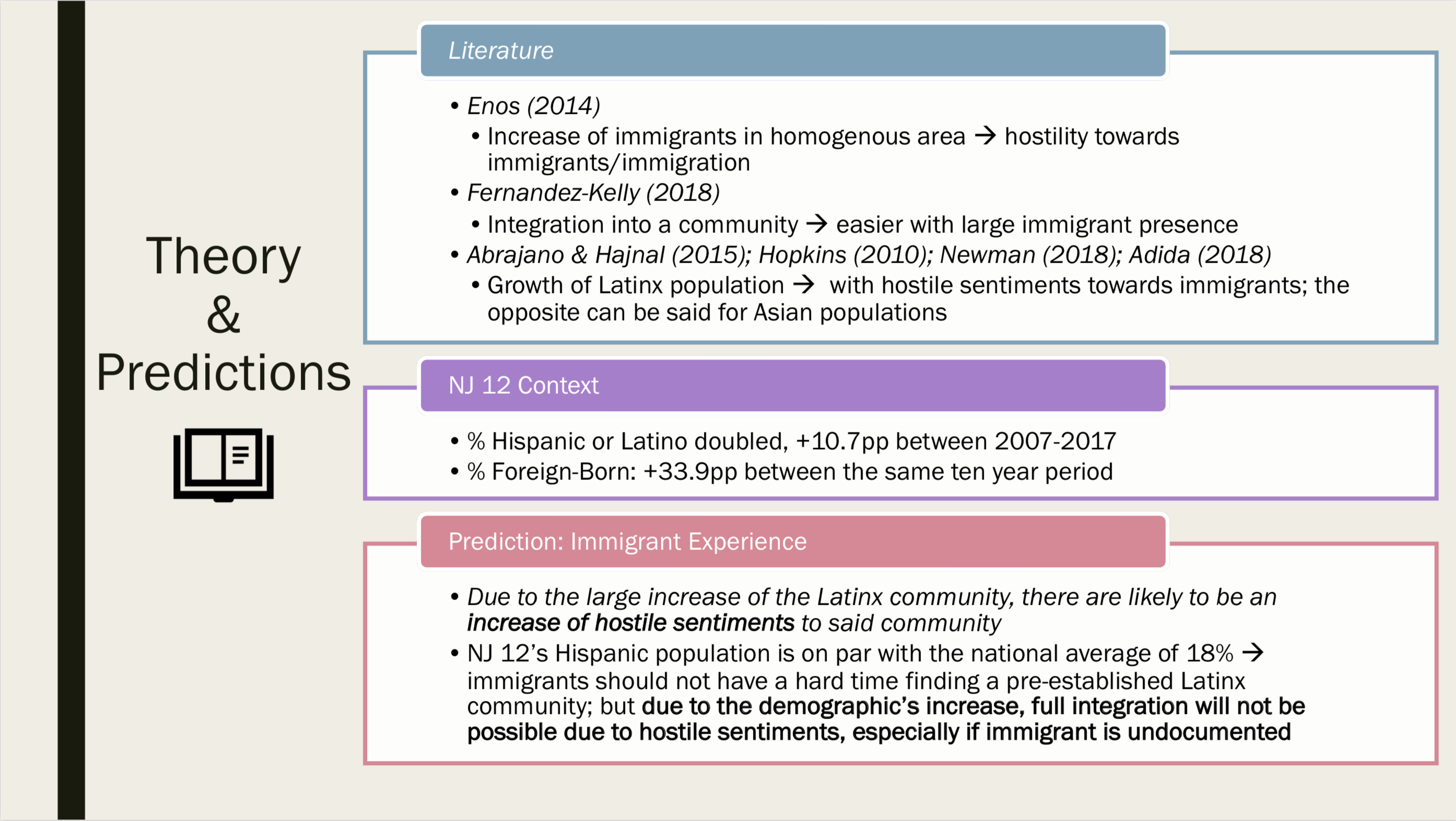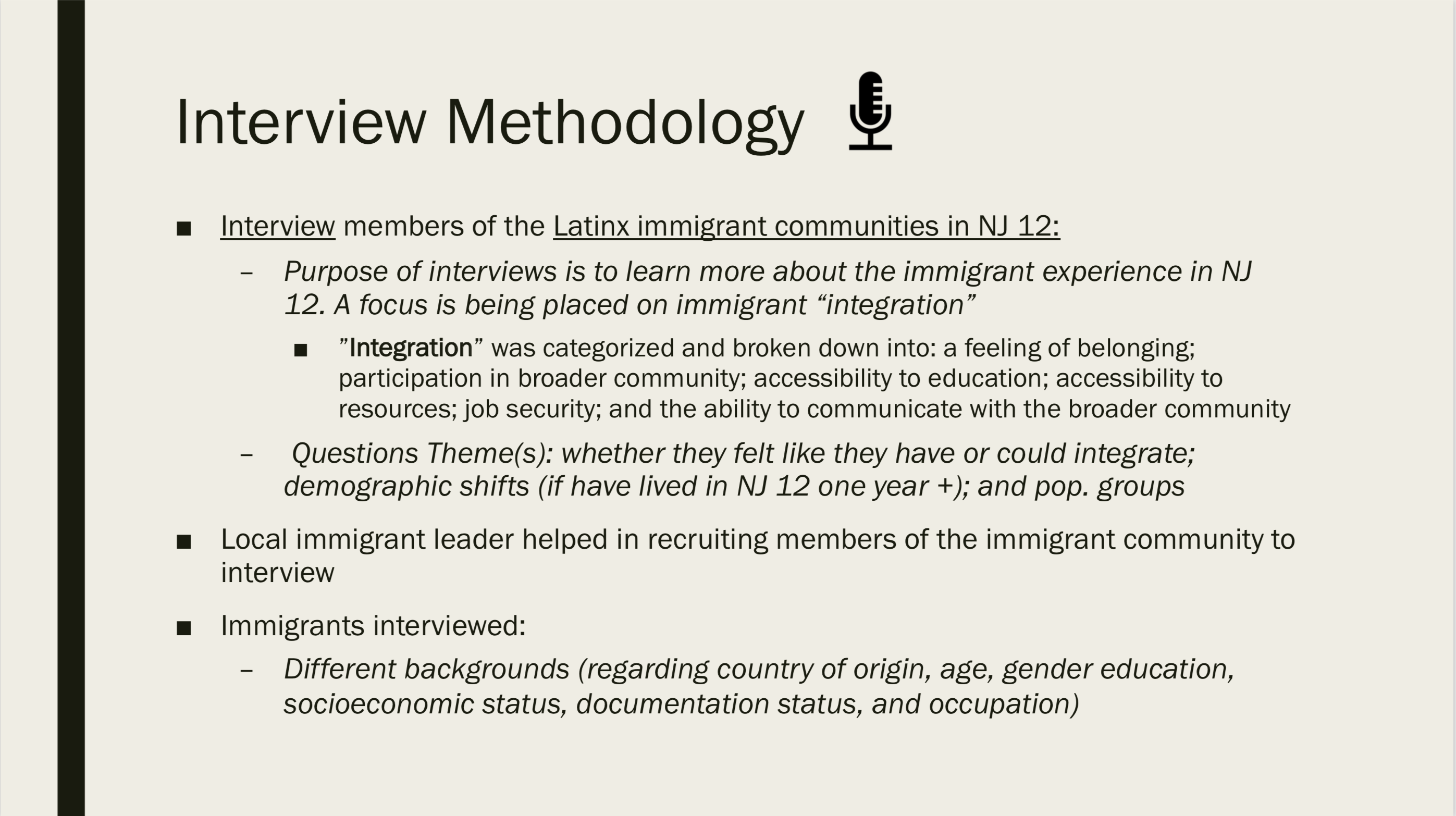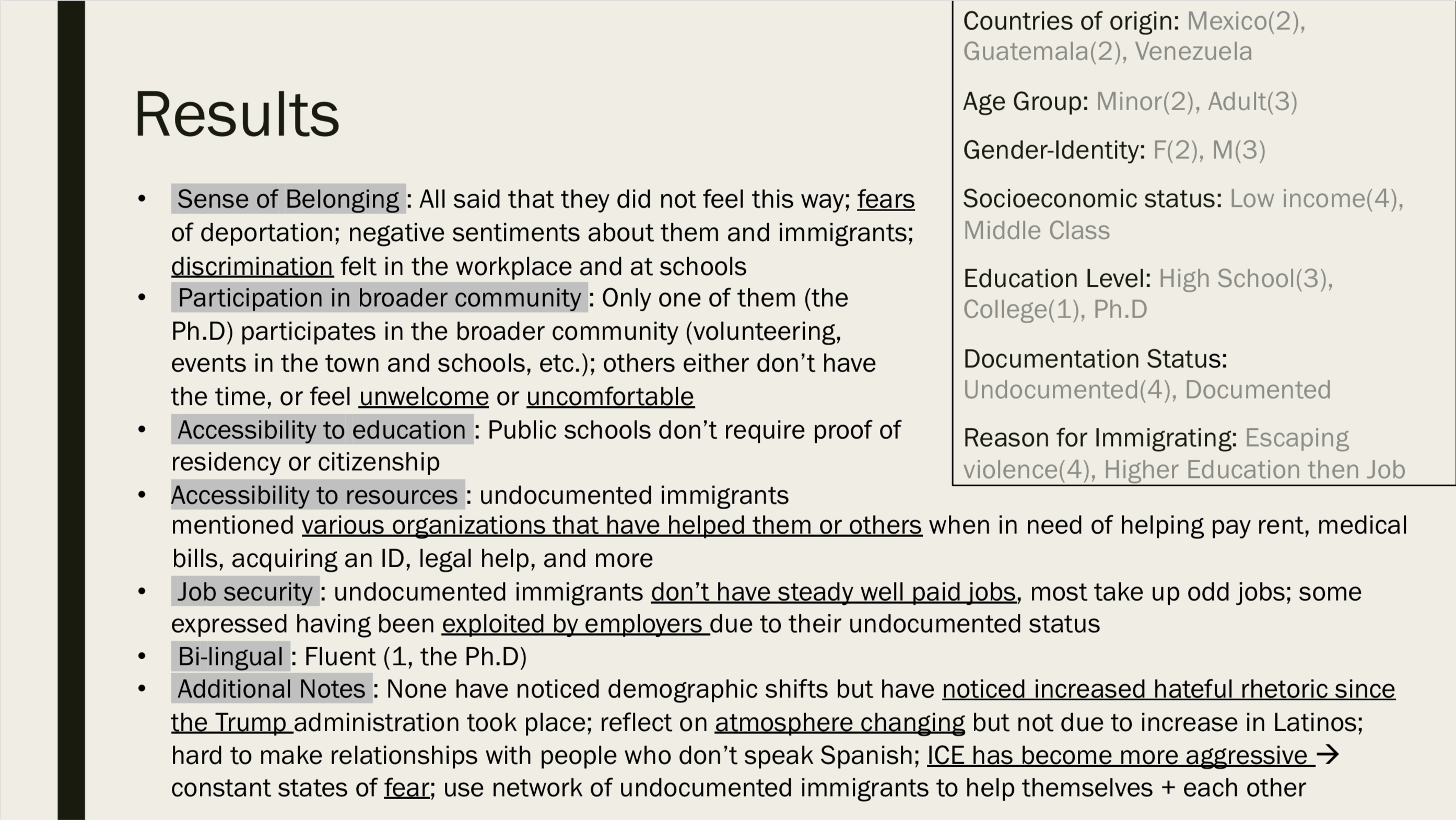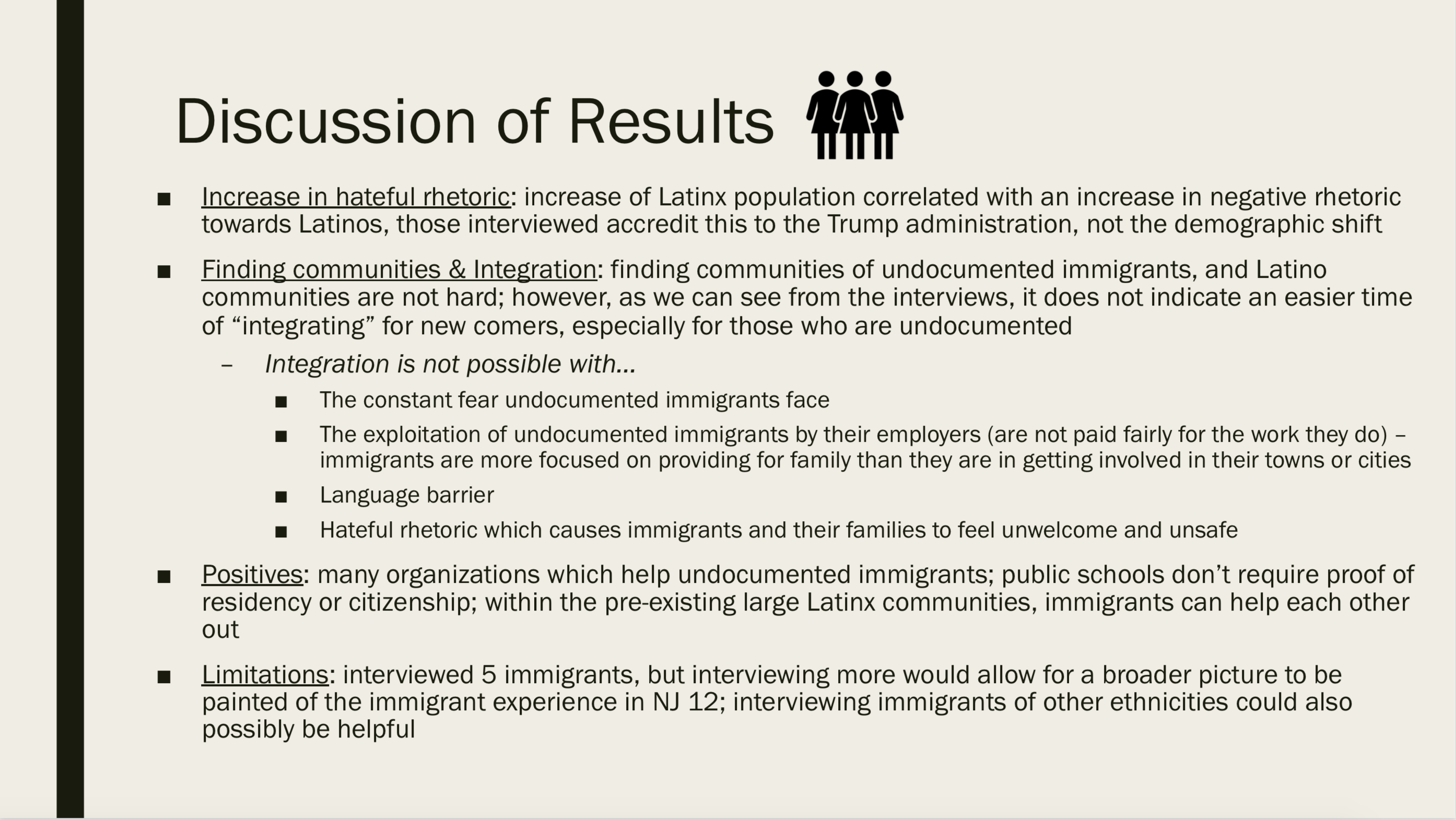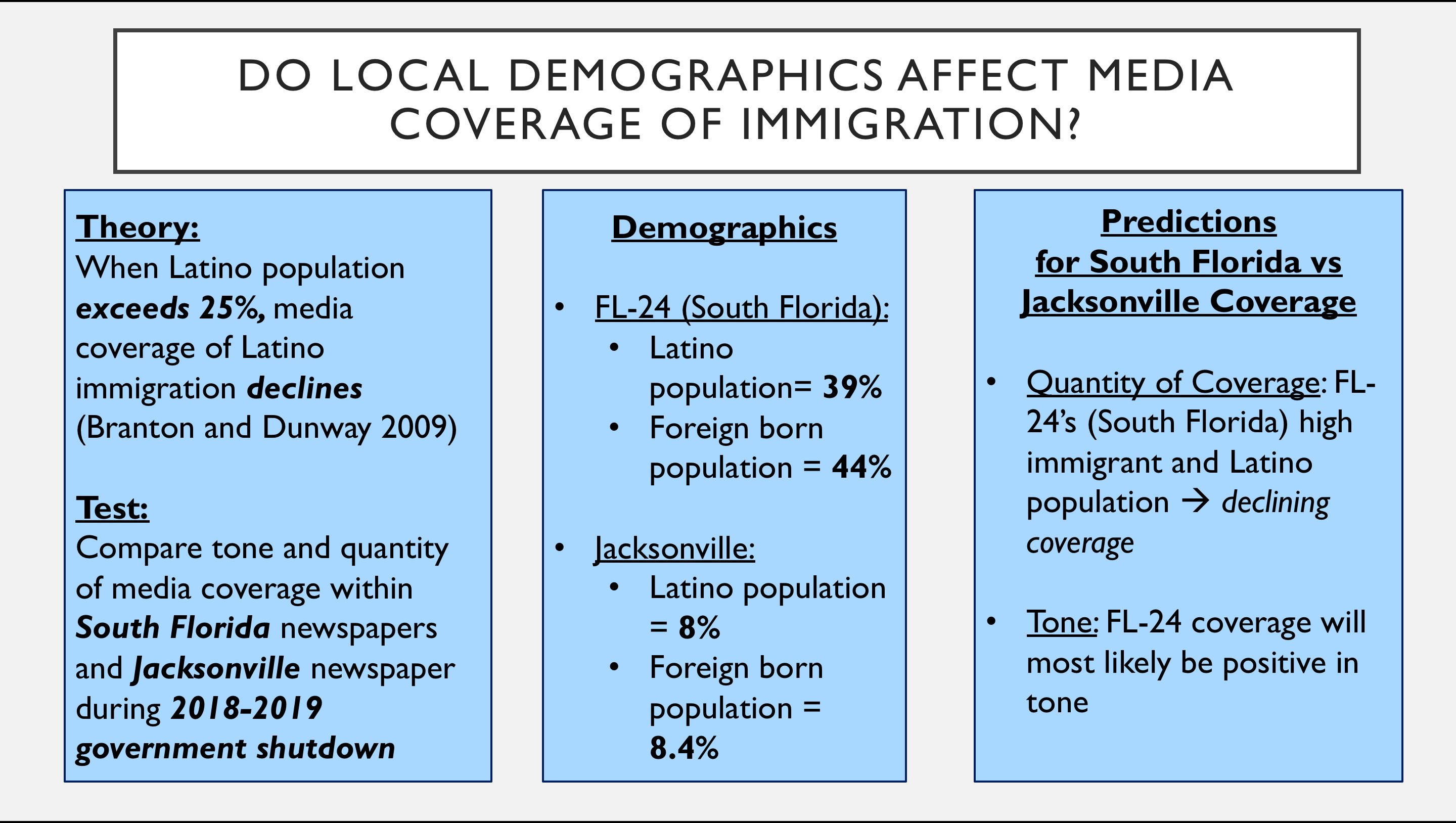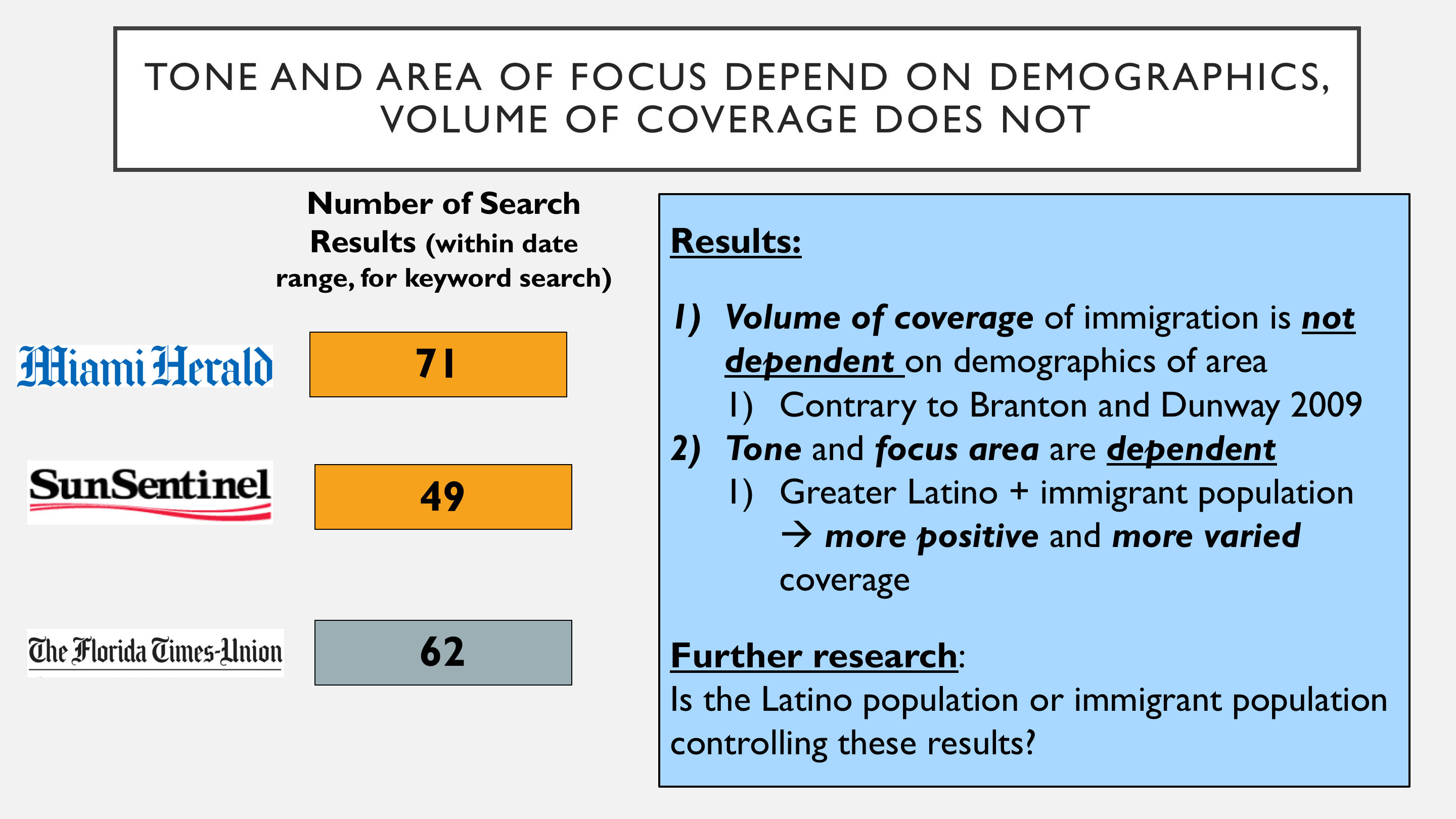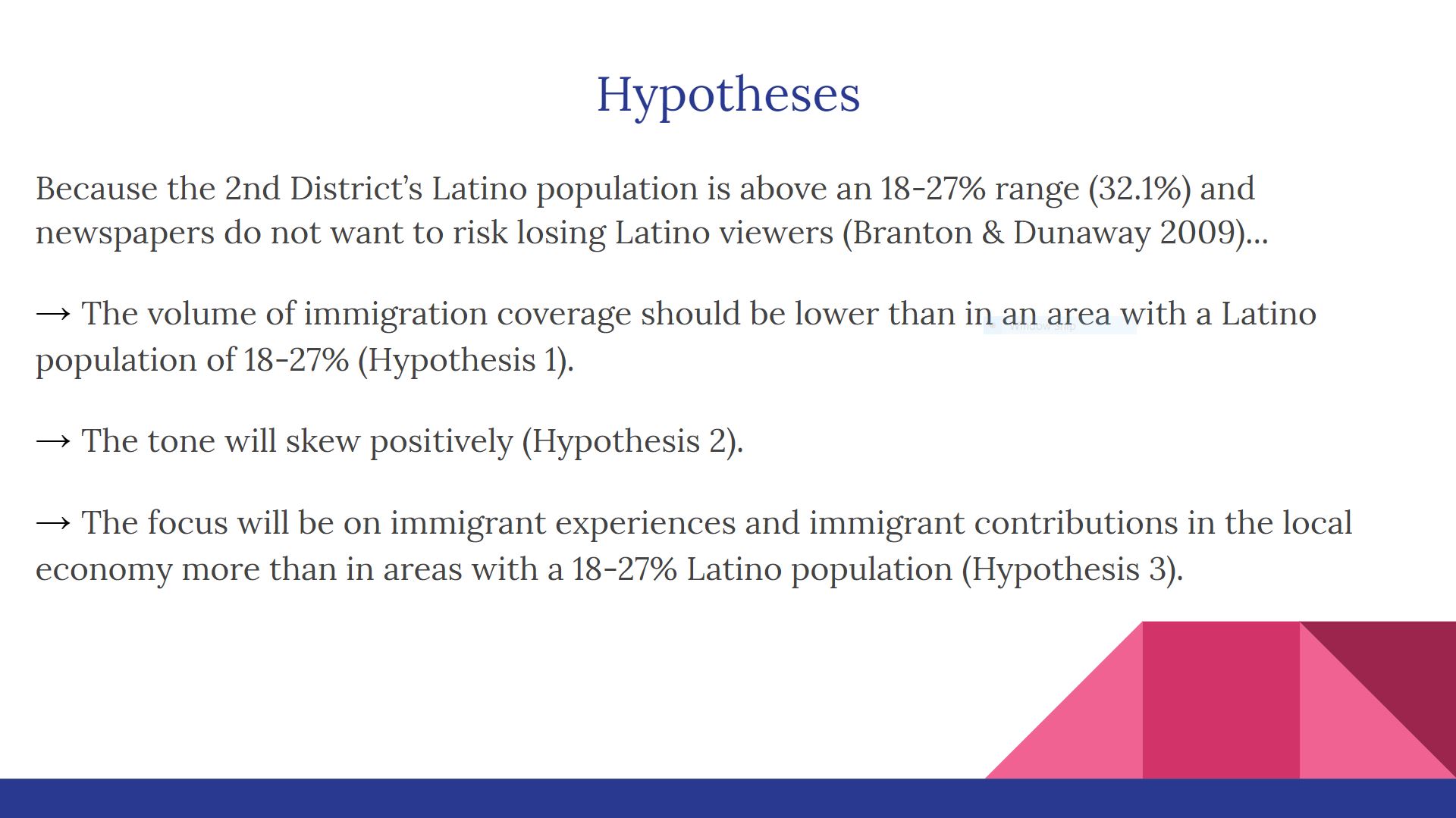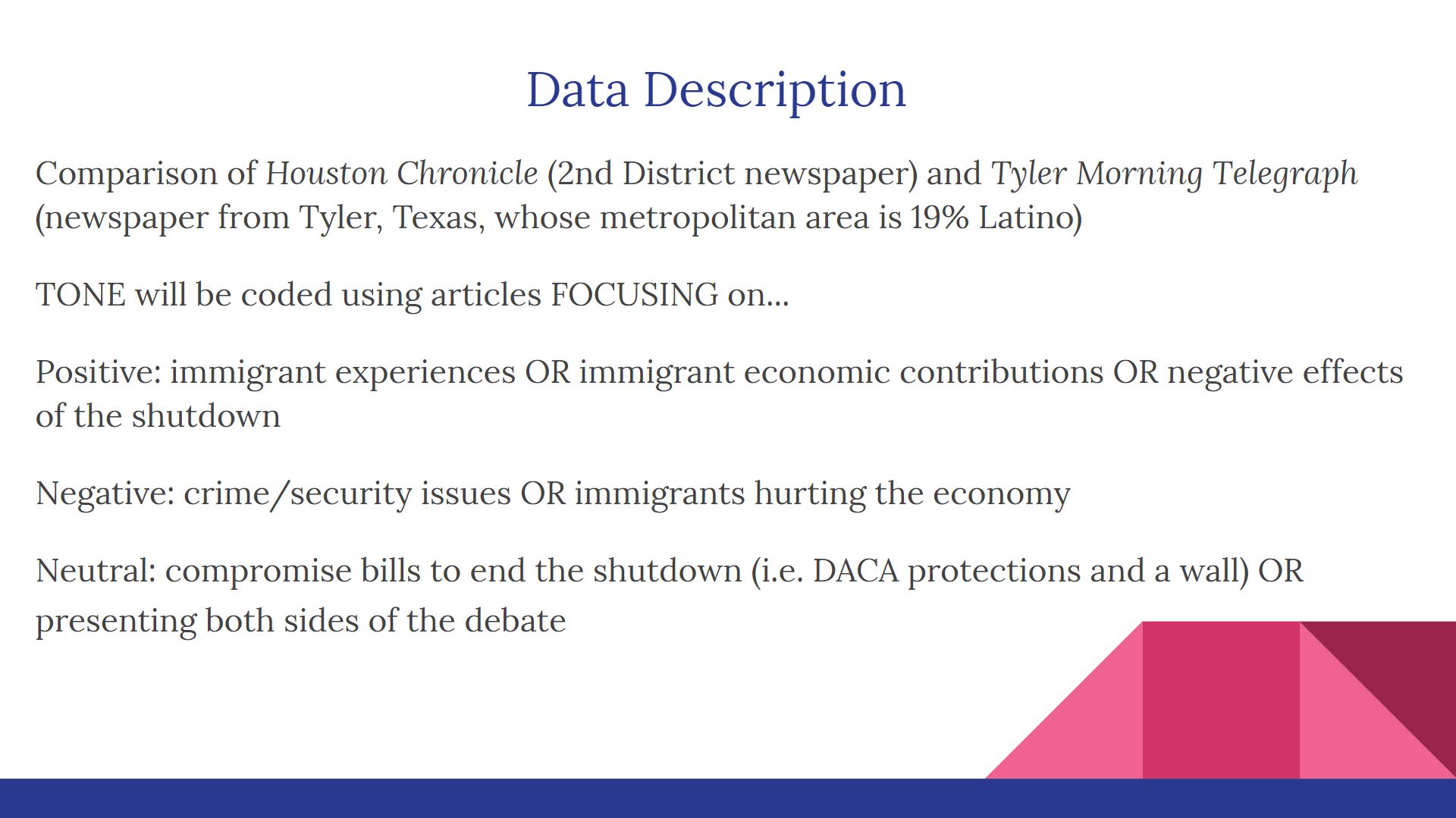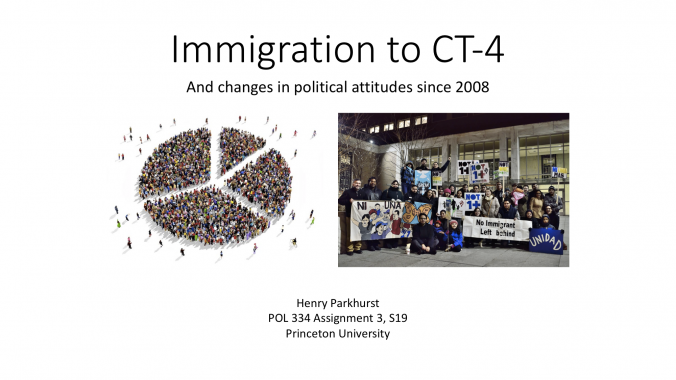
…..
Slide 1:
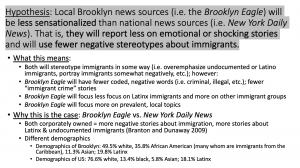
News sources will display their bias in two different ways: agenda setting and framing. Agenda setting means that news sources will give some problems more attention than others, and framing means that a story will be reported on in a biased way, through stereotyping/group imagery and tone of the coverage (Abrajano and Hajnal 2015). In this media analysis, I compared the news coverage of the Brooklyn Eagle, a corporately owned, local news source for Brooklyn, against New York Daily News, a corporately owned, national news source based in New York City. My hypothesis is that, while both news sources will to some extent stereotype immigrants (as they are both corporately owned), since the Brooklyn Eagle is a local news source, there will be more articles focused on issues prevalent to the local population, and the articles as a whole will strike a less negative tone when talking about immigrants. I believe this will be the case because, according to existing research, the media’s reporting of immigration (or any other subject) is based largely off of how well the news can sell. The first part of my hypothesis is based off of the fact that both news sources are corporately owned: according to Branton and Dunaway, “corporately owned organizations are expected to produce more stories focusing on Latino immigration, illegal immigration, and the negative aspects of immigration than privately owned media organizations.” This is probably due to the fact that corporately owned organizations are reliant on public ownership and therefore public opinion, whereas privately-owned organizations have more leeway in their article topics. For national news sources, however, this bias becomes even more apparent. Even with news sources that lean liberal (for example, Abrajano and Hajnal look at The New York Times), national news sources will often resort to using certain stereotypical, well-known themes, like suggesting that all immigrants are Latinos, or using “crime news scripts” with nonwhites (Abrajano & Singh 2009). There are several other ways the Brooklyn Eagle and the New York Daily News will differ. First, there will be differences due to the huge demographic differences between Brooklyn and the United States: while Brooklyn is majority nonwhite (~49.5% white), the United States is major white (76.6% white). Brooklyn also has large immigrant enclaves: in my district, for example, there is a large immigrant Afro-Caribbean population. I would therefore expect 1) less stereotypical “threat narratives” or “crime narratives,” because using them would alienate the local immigrant readership and 2) less focus on Latinos and more focus on other groups of immigrants in order to relate more with the local immigrant readership. Finally, since local news is aimed towards a much smaller group of people, the news will be more focused on the effects of immigration policies on their own district/region. National news outlets, on the other hand, have to find universal ways to relate to the audience they are trying to reach. National news will therefore be more focused on topics like federal politics or the overall situation of immigration at the border.
…..
Slide 2:
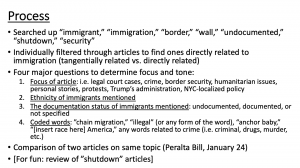
First, I used the key terms “immigrant,” “immigration,” “border,” “wall,” “shutdown,” and “security” to look up articles about immigration. I then went through each article and filtered through them to see how related to immigration the article was: I labeled the articles “tangentially” related to immigration (i.e. only mentioned the word “immigrant” or “immigration,” but the subject of the article was on something else completely), or “directly” related to immigration (i.e. the subject of the article was immigration). The “tangential” category was interesting to me, because it demonstrated that the newswriters were simply using “immigration” or “immigrant” as a buzzword within their articles because they thought it was a hot topic (i.e. the word “immigration” was often used without any elaboration). I ultimately eliminated the “tangential” articles from the rest of my study, however, because they weren’t very useful. Going through the “directly” related articles, I came up with a list of five key questions, and I will explain the reasoning behind each question:
- What is the focus of the article?: The focus of the article is related to the “agenda-setting” part of news coverage. What the news source decides to focus on is largely related to what the media source already expects its audience to think about immigration. I broadly separated articles into 7 categories: NYC-based policy (I expect local news sources to report more on this), court cases, crimes (the prevalence of this especially would demonstrate anti-immigrant bias), border security, humanitarian issues, personal immigrant stories, protests, and commentaries on the Trump administration.
- What is the race/ethnicity of the immigrant(s) mentioned? (i.e. country of origin, Latinx, etc.): Americans tend to associate immigration strongly with Latinx immigration (Abrajano and Hajnal 2015). By looking at the prevalence of Latinx immigrants mentioned, we can see whether the news source is feeding into this narrative. This is also another form of agenda-setting.
- Are the immigrants mentioned legal or undocumented?: Similar to the above, Americans tend to associate immigrants (specifically Latinx immigrants) with undocumented immigrants (Abrajano and Hajnal 2015). If the news source chooses to report mostly on undocumented immigrants, this is also another form of agenda-setting.
- How many coded words? The coded words I looked for were: “chain migration”; “illegal” (or any form of the word, like “illegally”); “anchor”; “[insert color here] America”; words related to crime (i.e. criminal, drugs, etc.): Through these coded words, one can ascertain the general tone of the article. One of the easiest ways to determine whether the news article is biased is to see whether they use the word “illegal” versus “undocumented.” I was very cognizant about this throughout my analysis.
Additionally, there was an article in the Brooklyn Eagle and the New York Daily News that covered the same event: the passage of the Peralta Bill that helped DREAMers acquire state aid for higher education. I was directly able to compare these two news sources to see if either the Brooklyn Eagle or New York Daily News had any differences in focus or tone in their reporting. Finally, just for fun, I filtered through all the articles about the shutdown to see how many talked about immigration.
…..
Slide 3:
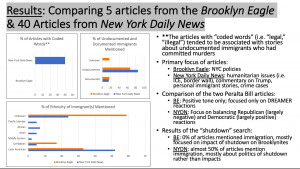
I ended up pulling 5 articles from the Brooklyn Eagle (because in this period of time, there were only 5 that mentioned immigration) and 40 articles from New York Daily News. Due to the different number of articles, in order to better compare the two news sources, I used percentages instead of count. For example, when I was measuring documentation, I found the percentage of how many immigrants were undocumented out of the immigrants mentioned across the articles. Using the aforementioned tests, therefore, I acquired the following findings: first, the Brooklyn Eagle as a whole mentioned immigration less. Less than 1% of the articles published during the shutdown were related to immigration. Indeed, none of the actual articles about the shutdown (i.e. when I searched up “shutdown”) were related to immigration at all: they all instead had to do with the problems that members of the district were facing due to the shutdown. On the other hand, New York Daily News published about 4% of its articles about immigration. Indeed, out of the articles about the shutdown, about 40% mentioned immigration at least tangentially (I ultimately eliminated these articles when I tested my four questions). Second, the focus of the articles was different. The Brooklyn Eagle published most (60%) of its immigration-related articles on local, NYC policies, whereas New York Daily News published about 28% of its articles on humanitarian issues (focused on ICE and border problems), followed by 16% commenting directly at Trump, and 12.5% for personal immigrant stories (i.e. following an individual immigrant’s journey) and crime cases. The prevalence of these crime cases was largely correlated to the number of “coded words.” About 40% of the New York Daily News articles used “coded words,” whereas 0% of the Brooklyn Eagle articles used them. Every single one of the crime case articles used the word “illegal” to describe the undocumented immigrants. Third, both news sources focused a large amount of their coverage on Latino and undocumented immigrants. 66% of the immigrants mentioned in the Brooklyn Eagle were undocumented and 33% were Latino; 85% of the immigrants mentioned in New York Daily News were undocumented and 52% were Latino. It should be noted that around 60% of the immigrants from Brooklyn Eagle were of unknown ethnicity, and 17% were Caribbean-American. Finally, in directly comparing the article about the Peralta DREAM Act against each other, we can see several differences: first, the Brooklyn Eagle spent much more time talking about Peralta himself. This is probably due to the fact Peralta served directly for NY’s State Assembly, but it’s interesting how the article delves into Peralta’s background (as a Dominican-American immigrant) whereas the New York Daily News only mentions him very briefly. I extrapolate that the focus on his Afro-Caribbean background in the Brooklyn Eagle could have pandered towards readers in the large ethnic/immigrant enclaves. Second, the Brooklyn Eagle only focused on the responses of the DREAMers, and therefore the tone was largely positive and pro- the Peralta Bill. On the other hand, New York Daily News spends half the article reporting on conservative viewpoints of the bill, all of which are largely negative.
…..
Slide 4:
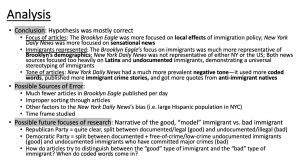
According to my results, my hypothesis was mostly correct. Both news articles did fall into the trap of talking extensively about undocumented and Latinx immigrants, demonstrating sources bias in their reporting. However, the Brooklyn Eagle did report on some Caribbean-Americans, and thus was more representative of Brooklyn’s demographics. This suggests that local media is impacted by the makeup of the population. On the other hand, New York Daily News was not representative of either New York or the United States, suggesting that it relied on the idea of the stereotypical immigrant (i.e. Latinx, undocumented) in order to grab its reader’s attention. In addition, the Brooklyn Eagle focused much more on the local effects of immigration policy (that is to say, it was more focused on how federal immigration policy affected local residents, and it was more focused on local immigration policy), whereas New York Daily News was more focused on emotional or shocking national news (i.e. stories of families being ripped apart at the border, crimes committed by undocumented immigrants). This demonstrates that national news sources tend to be more sensationalized than local news sources. Additionally, while New York Daily News used a significant amount coded words, published immigrant crime stories, and used quotes from anti-immigrant natives, the Brooklyn Eagle did none of this. All this contributed to a more prevalent negative tone about immigrants in New York Daily News that was not apparent in the Brooklyn Eagle, again indicating greater sensationalizing in the national news source. Finally, the comparison between the two articles about the Peralta Bill most clearly reveals the difference in focus and tone between the two news sources. First, the ethnicity of the immigrants mentioned in the two articles is different. The Brooklyn Eagle mentioned Dominican-American and Argentinian-American, while New York Daily News mentioned a Mexican-American. This difference indicates the pandering towards the Caribbean-American audience for the Brooklyn Eagle. New York Daily News, on the other hand, pandered towards a wider audience by stereotyping undocumented immigrants; indeed, it’s especially prevalent that they chose a Mexican-American rather than another ethnicity. Second, the tone in the Brooklyn Eagle is positive (as they only used interviews from DREAMers and supporters of the bill), whereas New York Daily News has a neutral and almost negative tone (as they heavily relied on interviews from conservatives and people who did not support the bill). In all, therefore, the Brooklyn Eagle focused more on news that related to its local population and reported on immigration in a more favorable light. New York Daily News, on the other hand focused on sensational stories and reported on immigration, as a whole, more negatively. Before I conclude, I would like to address some sources of error. First, I understand that five articles is an extremely small sample size; however, local news sources (the Brooklyn Eagle as well as other Brooklyn-specific news sources I looked at) simply did not tend to cover immigration to a large extent. Nevertheless, the fewer articles made it harder to compare the two news sources. Second, I may have improperly sorted through articles. I discarded many articles that only tangentially mentioned immigration; however, I understand that my own bias may have affected this. Third, New York Daily News is also a New York-based source; as such, I’m not sure to what extent it distributes to NYC. I emailed them to ask about this, but I never got a response. Seeing as New York is about 27.5% Latinx, however, if New York Daily News does distribute extensively to NYC, this may partially explain the prevalence of reporting on Latino immigration. Finally, because we were looking at a time period when the border-wall-induced shutdown was happening, the news articles definitely chose to spend more time talking about Latinx and undocumented immigrants at this time; it would be interesting therefore to look at another period of time to see if the things I observed still hold true. To end, if I were to continue my research, besides looking at a different time period, I would want to look more at the crime narratives put forward by the New York Daily News: it was very clear in those articles that the writer was trying to distinguish “bad” immigrants (i.e. the criminals) and “good” immigrants (i.e. the documented cop killed by the undocumented immigrant). It was especially in these articles that the undocumented immigrants were referred to as “illegal” (indeed, these were the only articles in which the undocumented immigrant was called “illegal” every time). In other articles, the author tries to distinguish between bad undocumented immigrants and the majority of good undocumented immigrants. This was very interesting to me: it seems like, for conservative news sources, the split for “good” immigrants is very clear—documented immigrants are “good,” and undocumented immigrants are “bad.” For liberal news sources, this distinction is much more difficult to ascertain, and I would like to look further into this.
